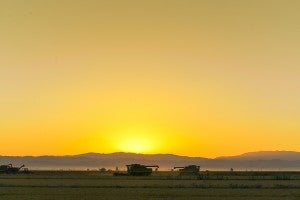
Robert Parkhurst was in Los Angeles yesterday speaking at a conference on Navigating the American Carbon World. His panel discussed the “Future Offset Supply.”
California Governor Jerry Brown issued an executive order this week ramping up the state’s already ambitious greenhouse gas reduction goal, setting a new target to reduce emissions by 40 percent over 1990 levels by 2030.
“With this order, California sets a very high bar for itself and other states and nations, but it’s one that must be reached — for this generation and generations to come.” – California Governor Jerry Brown
This new target is a timely and significant step in securing a more resilient future for California, which is currently experiencing one of the most severe droughts in the state’s history. But it’s a tall order – and one that will require an array of aggressive strategies across all sectors.
Fortunately, crop-based farmers are well-positioned to help.
A new sector at play
In his remarks at the North American Carbon World conference, Governor Brown stated that we must reduce the release of methane and “manage farm and rangelands, forests and wetlands so they can store carbon.” That’s good news because, for the first time this year, farmers will have the opportunity to earn additional revenue by reducing emissions generated through rice cultivation.
The California Air Resources Board is in the final stages of approval for a pioneering protocol that would allow rice farmers to generate carbon credits through a variety of voluntary practices that reduce methane emissions. These include dry seeding, early drainage, or alternate wetting and drying. Farmers that implement these techniques can earn new revenue while also contributing to the state’s clean air goals.
Nearly two dozen farmers on more than 20,000 acres are already participating in projects and have started implementing practices that will generate offsets as soon as this summer.
Opening the flood gates, so to speak
Rice is the gateway protocol to a whole slew of other crops that have the potential to contribute big emission reductions in the coming years, not to mention new earning potential for producers. There are a variety of other protocols in the works across the country, from fertilizer to compost, that would further enlist farmers and ranchers in the battle towards climate stability and increased agricultural resiliency.
The rice program pioneered an infrastructure than can now be used to create a whole new generation of offsets from the agricultural sector that will help California – and the nation as a whole – achieve its emissions reduction goals and secure a more vibrant and prosperous future.
The governor put it best when he said, “With this order, California sets a very high bar for itself and other states and nations, but it’s one that must be reached — for this generation and generations to come.”










